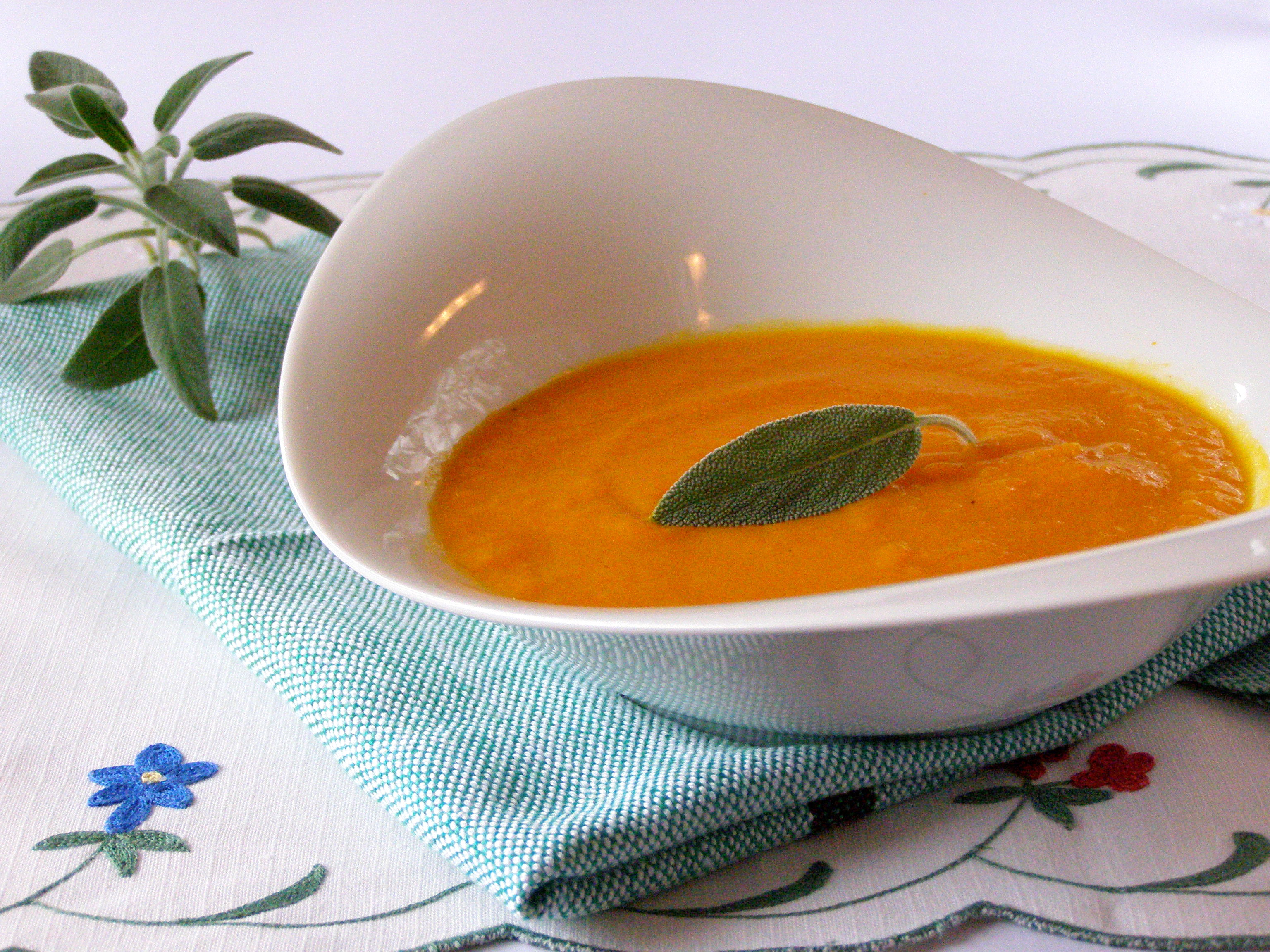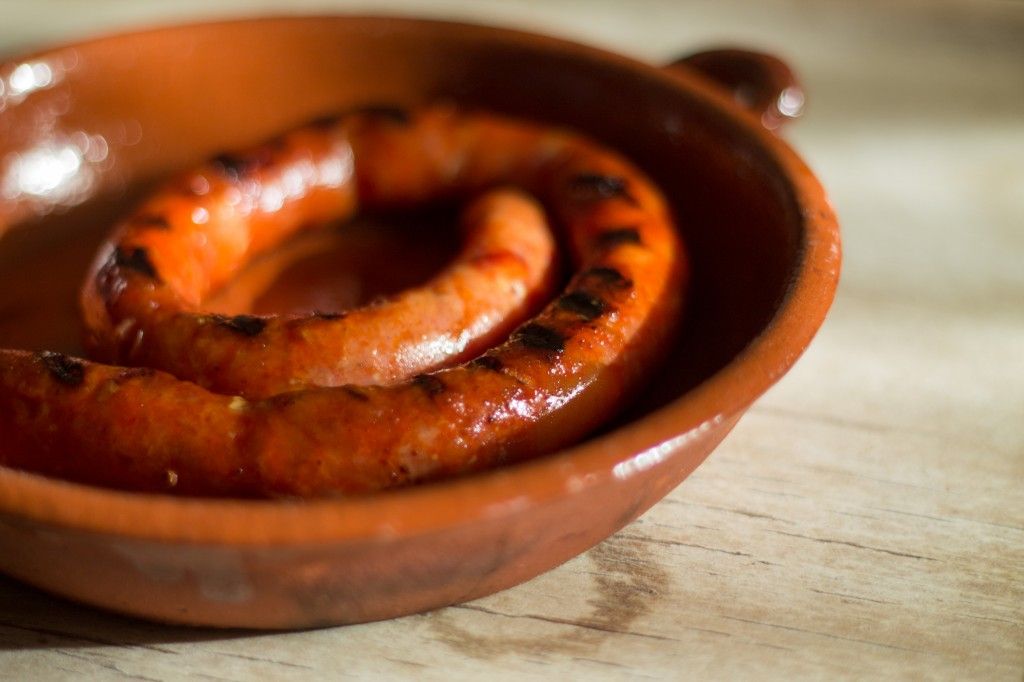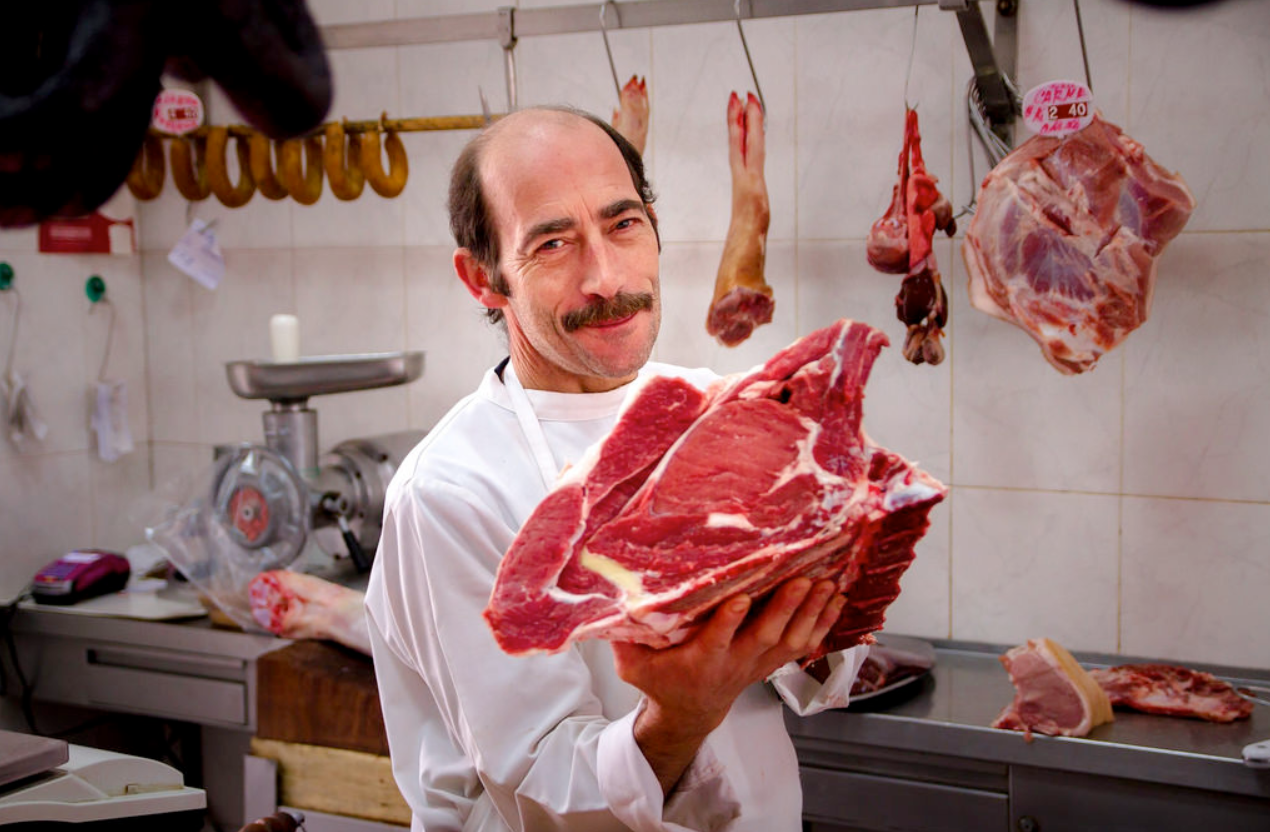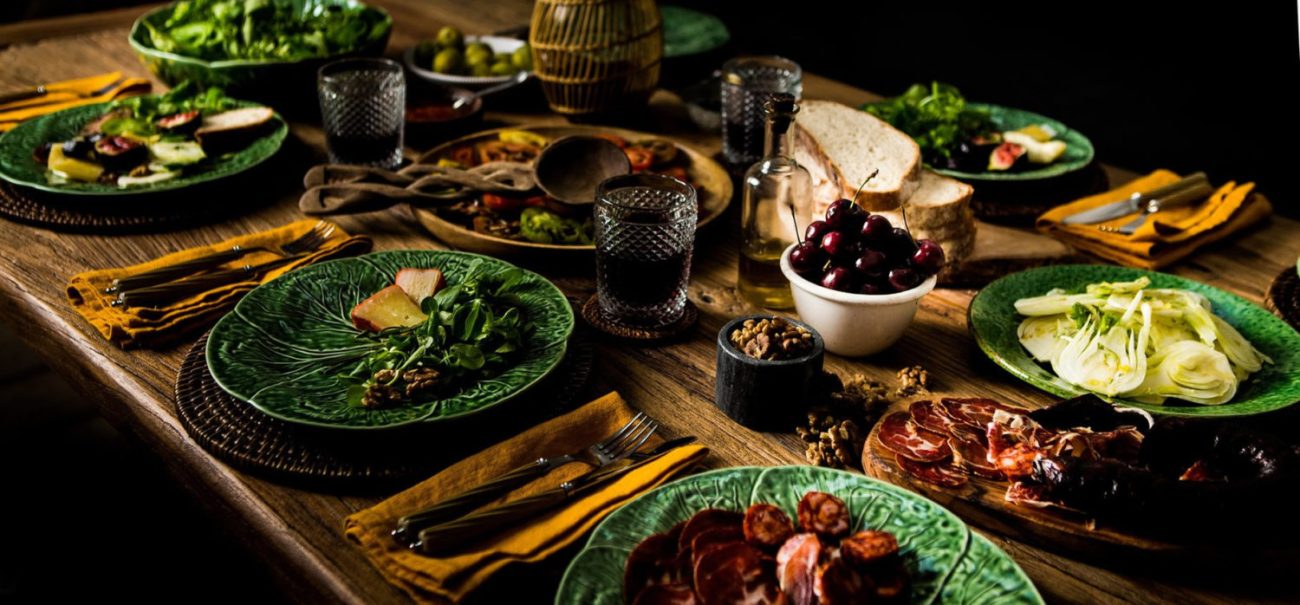Part II: How to Shop for Food in Portugal
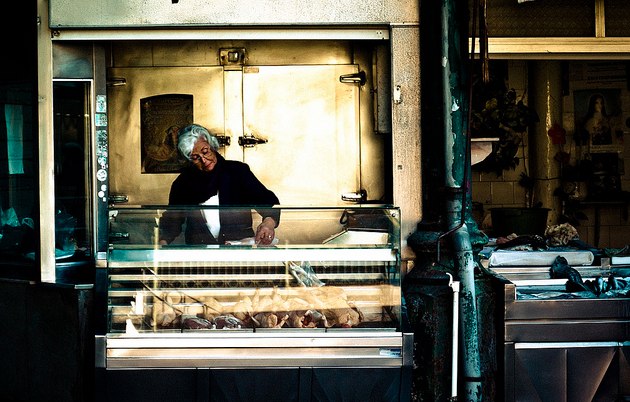
 Can you believe that in the 4+ years that I’ve lived here, I’ve only started cooking Portuguese dishes at home in the last year? I kept telling myself it’s best I leave the Portuguese cooking to the experts- meaning the mothers and grandmothers of people I know and all the other little ladies who work in the local restaurants consistently turning out delicious food. What I finally realized, however, is these very same women aren’t using any expensive, exotic ingredients or complicated cooking techniques. The beauty of Portuguese cuisine is how well they make use of the abundant local fresh ingredients readily available to them: this includes not only locally sourced fruit, vegetables and livestock, but also the vast diversity of fresh fish from the country’s expansive coastline. And with such straightforward methods for preparing dishes, such as one-pot meals and simple grilled meat and fish, they make it easy for newcomers to successfully prepare delicious meals right at home.
Can you believe that in the 4+ years that I’ve lived here, I’ve only started cooking Portuguese dishes at home in the last year? I kept telling myself it’s best I leave the Portuguese cooking to the experts- meaning the mothers and grandmothers of people I know and all the other little ladies who work in the local restaurants consistently turning out delicious food. What I finally realized, however, is these very same women aren’t using any expensive, exotic ingredients or complicated cooking techniques. The beauty of Portuguese cuisine is how well they make use of the abundant local fresh ingredients readily available to them: this includes not only locally sourced fruit, vegetables and livestock, but also the vast diversity of fresh fish from the country’s expansive coastline. And with such straightforward methods for preparing dishes, such as one-pot meals and simple grilled meat and fish, they make it easy for newcomers to successfully prepare delicious meals right at home.
In my last article on Shopping for Food in Portugal, I talked about where to shop for the best produce in Portugal – Lisbon specifically – and highlighted the ample fresh fruit available here during the summer months. Now, as the seasons change and it starts to become cooler, extended-stay vacationers may be more inclined to do a bit more cooking on their own on a nice, breezy fall evening, using Portuguese fish or meat.
So how does one shop in Portugal for the best fish and meat? Your best bet for fresh fish is to get up early and head to one of mercados (open markets), where you can also find talhos (butcher shops) for quality meat. There are open markets all over the city, however the ones closer to the downtown, such as Mercado da Ribeira and Mercado de Campo de Ourique, are relatively weak nowadays. Therefore, Saturdays, it’s better to go up into the backbone of city for the higher quality markets. Some of the best markets in Lisbon are Mercado de Benfica (#758 Bus), Mercado de Alvalade (Alvalade Metro Stop) Mercado de Arroios (Alameda Metro stop) and Mercado 31 de Janeiro (Saldanha or Picoas Metro stops). Plan on cooking your fish dishes between Tuesday and Saturday, when the market is open, and opt for doing meat dishes on Sundays and Mondays. Then again, you may want to buy all of your meat on Saturday because most butcher shops are closed on Sundays and Mondays as well. If you’re not a planner, no worries, you can buy straight from the butcher at the supermarket. I don’t suggest picking up pre-packaged meat, however, as it’s far from fresh.

I’ve talked about the types of Portuguese fish in “Peixe In Portugal: The Numerous and Delicious Varieties of Portuguese Fish” and how to find the best deals in my “Interview with Portuguese Fisherman Carlos Manuel” but the majority of those fish, such as sardinhas (sardines), robalo (sea bass) and dourada (gilt-head bream) are usually grilled over hot coals, which is great if you have an outdoor area where you’re staying but really, really smelly and smokey if done inside. However, the latter two white fish are also commonly roasted in the oven at home, thus avoiding the lingering of a strong fishy smell. They both use the same mixture of ingredients: alho (garlic), cebola (onions), tomate (tomatoes) or polpa de tomate (tomato puree), louro (Bay leaf), salsa (parsley) and/or coentros (cilantro) thrown together in a roasting pan with the fish seasoned with sal e pimenta (salt and pepper) and drizzled with a healthy amount of azeite (olive oil) and vinho branco (white wine) then roasted whole in the oven with batatas (potatoes) for about 45 minutes. With these same ingredients, plus some green and red bell pepper, you can make another tasty Portuguese fish dish: Arroz de Tamboril, or Monkfish stewed with rice. You can find whole fresh tamboril in any market, just ask the fish monger to “corte em pedaços faz favor” or “cut into pieces please”. And don’t disregard the liver because monkfish liver is highly prized and gives a lot of flavor to the rice! Many people also add clams and shrimp or shellfish to the dish, see below for the recipe.
When it comes to meat, you can basically find any cut, limb or innard available. Most talhos carry a good quantity of carne de porco (pork), carne de vaca (beef) or novilho (lean beef or veal), frango e galinha (chicken and the fattier hen), coelho (rabbit) and a smaller quantity of peru (turkey) and borrego (lamb). During game season, and the Christmas holidays, you can typically stumble onto cordoniz (quail) and cabrito (young goat) for pre-order. Pato (duck) tends to only be sold fresh at butchers specializing in poultry (aves). The great element about simple meat seasoning in Portuguese cuisine is that you only need to use the same three ingredients: sea salt, sliced garlic and fresh lemon juice. Buy any type of bife (steak or cutlet), costeleta (chop) entremeada (pork belly/fatty ribs) or febras (poor man’s cut of steak), then marinate the for at least 30 minutes in those very ingredients followed by a quick grill or sauté and you’ve created a slice of heaven. But for the more curious eater, try cooking rabbit, as it’s very common in Portugal and best of all they are not at all like incredibly tough wild rabbit meat most people know (which is called lebre here), but actually much smaller and tenderer. They come whole with the head on by law, to ensure no one is pawning them off for a cat. For easy handling at home, the butcher can chop the meat into chunks, adding the head and organs within the package – perfect for a savory and flavorful addition to sauces, or saute up the liver on its own. Then, one of the easiest ways to prepare it is to mix the pieces in a large pot with sea salt, sliced onions, garlic, bay leaf, olive oil and either white wine or red wine. Simmer with the lid on for about 45 minutes to an hour or until the meat starts to fall off the bone. Add a handful of fresh parsley to mix at the end and serve over rice. It should be absolutely tender and delicious! For a list of all the typical cuts and parts of meat, see the list below.
 While you’re at the butcher, please don’t forget to pick up some the wide variety of Portuguese sausage! I’ve mentioned some of my favorites like alheira as one of my “10 Delicious Reasons Why You Should Visit Portugal” , but there are plenty of other scrumptious ones you can always find at the butcher, such as: linguiça- small, thin fresh or cured sausages that are great as a petisco (snack). Roasted on a traditional assador chouriço – a ceramic roaster typically shaped as a pig that you fill the bottom with alcohol or aguardente and lite – until crispy and oozing with delicious meat juice. Some other fabulous Portuguese sausage include: morçela, a typical cured, dark blood sausage made with or without rice and farinheira, a very soft sausage made mostly from pork fat and farinha-flour along with a mix of blended red bell pepper, paprika and wine . One of the most popular Portuguese dishes, Cozido á Portuguesa, is made with these latter two sausages, along with all the other undesirable pork parts, cabbage, collard greens, turnips, carrots, potatoes, rice, beans, pretty much anything you can throw in! So I challenge you, if you’re staying in Lisbon with a group of people and want to really be adventurous in Portuguese cuisine, try making a big pot of Cozido using your new-found knowledge of buying fresh produce and meat here in Portugal, I guarantee if you follow the guidelines it will be a delicious meal for you! I’ve even provided a solid recipe below with a link to a step by step video guide of it so you have no excuse. And if you decide to do this challenge we’d love to hear how it turned out and see a photo of your hard work! Whatever you decide cook with your fresh purchases, we hope you thoroughly enjoy what Portuguese cuisine has to offer!
While you’re at the butcher, please don’t forget to pick up some the wide variety of Portuguese sausage! I’ve mentioned some of my favorites like alheira as one of my “10 Delicious Reasons Why You Should Visit Portugal” , but there are plenty of other scrumptious ones you can always find at the butcher, such as: linguiça- small, thin fresh or cured sausages that are great as a petisco (snack). Roasted on a traditional assador chouriço – a ceramic roaster typically shaped as a pig that you fill the bottom with alcohol or aguardente and lite – until crispy and oozing with delicious meat juice. Some other fabulous Portuguese sausage include: morçela, a typical cured, dark blood sausage made with or without rice and farinheira, a very soft sausage made mostly from pork fat and farinha-flour along with a mix of blended red bell pepper, paprika and wine . One of the most popular Portuguese dishes, Cozido á Portuguesa, is made with these latter two sausages, along with all the other undesirable pork parts, cabbage, collard greens, turnips, carrots, potatoes, rice, beans, pretty much anything you can throw in! So I challenge you, if you’re staying in Lisbon with a group of people and want to really be adventurous in Portuguese cuisine, try making a big pot of Cozido using your new-found knowledge of buying fresh produce and meat here in Portugal, I guarantee if you follow the guidelines it will be a delicious meal for you! I’ve even provided a solid recipe below with a link to a step by step video guide of it so you have no excuse. And if you decide to do this challenge we’d love to hear how it turned out and see a photo of your hard work! Whatever you decide cook with your fresh purchases, we hope you thoroughly enjoy what Portuguese cuisine has to offer!
Happy Eating,
Andrea Smith
If all this food and drink porn has got you lusting after the real thing; then check out Catavino’s recommended gourmet tours of Portugal.
bife, bifinhos – steak, cutlets
picanha – very thin cut of beef steak
bifana – thin pork cutlet, used to make the classic bifana sandwiches
costeleta – chop
entrecosto, piano – pork ribs
entremeada- cheapest cut of fatty ribs, pork belly (really fatty but tasty)
febras – cheapest/poorest cut of steak
cachaço – neck
chambão – part used for stewed beef
peito – flank (beef, lamb)
peito de frango, peru – chicken breast, turkey breast
perna- leg
lombo – loin/tenderloin
lombinhos – medallions
carne picada…de vaca, porco etc. – ground meat, then say which kind of meat
asas – wings
Other Parts
bochechas de porco – pig cheeks
figado/iscas – liver (normally pork)
dobrada/tripas – tripe
rins – kidneys
coração – heart
com/sem miudos – with/without giblets, organs
rabo de vaca – oxtail
orelhas de porco – pig ears
chispe/mão de porco – pig’s feet
mão de vaca – cow hooves
Cozido à Portuguesa (For 6 People)
Recipe from Sabor Intenso -There is a step by step video on the link if you want to follow along with the recipe.
- 500g of stewing beef
- 1 Chispe (see list above)
- 1 Orelha de Porco (see list above)
- 300g de Entremeada (see list above)
- 1 Chouriço Corrente (normal cured sausage)
- 1 Chouriço de Carne (another normal cured sausage, made with more meat, also called Chouriço Extra)
- 1 Chouriço de Sangue (soft, fresh blood sausage)
- 2 Farinheiras (soft sausage made from pork fat and flour)
- 1 Morcela de Arroz (cured blood sausage with rice, not soft)
- 1800g de Couve Lombarda (regular green cabbage)
- 800g de Couve Portuguesa (collard greens)
- 2 Nabos (turnips), quartered
- 4 Batatas (potatoes) halved
- 4 Cenouras (carrots) quartered
- 300g de Arroz (rice)
- 1 Cubo de Caldo de Carne (beef bouillon cubes, you can get this at any grocer or supermarket)
- 1 Cubo de Caldo de Galinha (chicken bouillon cubes, same as above)
- 1 Cubo de Caldo de Legumes (vegetable bouillon cubes, same as above)
- Sal Grosso q.b. (coarse sea salt)
- Cravinho q.b. (whole cloves, about 4-5)
- 1 Lata de Feijão Branco Cozido (canned white beans, you can get this at any grocer or supermarket)
Preparação:
- Fill a large pot with water, add all three bouillon cubes, salt, cloves and the chouriço corrente. Bring to a boil.
- Wash the meats. Add the stewing beef, entremeada, chispe, orelha and chouriço de carne to the pot, let it boil until the meat is cooked- the orelha and the stewed beef will take the longest.
- Wash the vegetables. After the meat is cooked, remove it from the pot and set aside. Add the cabbage and the collard greens and let it boil for about 5 minutes. Add the morcela de arroz, turnips and carrots, let it boil for about 5 minutes.
- Once the vegetables have boiled, in a separate pot with the rice, ladle enough cooking liquid from the large pot into the rice to cook, let the rice boil in this liquid until done. Add the potatoes to the large pot of cooked vegetables, prick the farinheiras and the rest of the chouriços with a toothpick several times then add to the pot to boil. After 4 minutes, remove the chouriço de sangue from the pot, set aside.
- Ladle a bit more of the cooking liquid from the large pot to a third pot with the white beans, let it boil up just until heated.
- Once everything is all cooked, cut up all of the meat and sausage and serve on a tray, along with a separate tray of the vegetables.
Arroz de Tamboril- Monkfish Stewed with Rice (For 5 people)
Recipe from Sabor Intenso -There is a step by step video on the link if you want to follow along with the recipe.
- 800g or 1 and 3/4 pounds of monkfish loin, cut into pieces
- 1 medium onion, chopped
- 4 ripe tomatoes, chopped with skins removed
- Half a red bell pepper, minced
- Half a green bell pepper, minced
- 2 cloves of garlic, minced
- 2 Bay leaves
- 1 cubo caldo de peixe- fish bouillon cube (you can buy these at a supermarket or grocery)
- Olive oil
- 1/2 cup white wine
- 400g or a little over 3/4 pound of clams
- 12 shrimp (frozen or fresh, larger shrimp are not from Portugal, only small ones)
- 380g or about 3/4 pound of rice
- 1 liter of water
- 1 bunch of chopped fresh cilantro
- Salt
- Pepper
Preparation:
- In a large pot, heat the olive oil and saute the onion, garlic, bell peppers and Bay leaf until translucent, stirring, about 5 minutes.
- Add the tomatoes and let it cook another 5 minutes. Once the vegetables are tender, add the monkfish and season with salt and pepper. Add the caldo de peixe and pour the white wine over it all, let it come to a boil.
- Once boiling, turn the pieces of monkfish over and let it cook another 5 minutes. Add the liter of water and let it come to a boil again.
- Once boiling, add the rice. Let it cook for about 10 minutes.
- Add the shrimp and the clams and let it cook another 7 minutes.
- Once everything is cooked and all the clams have opened, turn off the heat and add the chopped cilantro, mix it up and serve.




